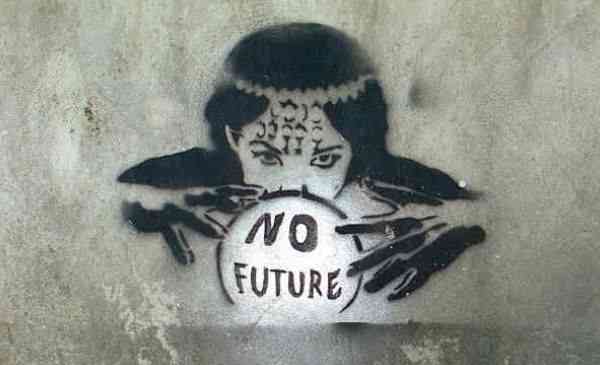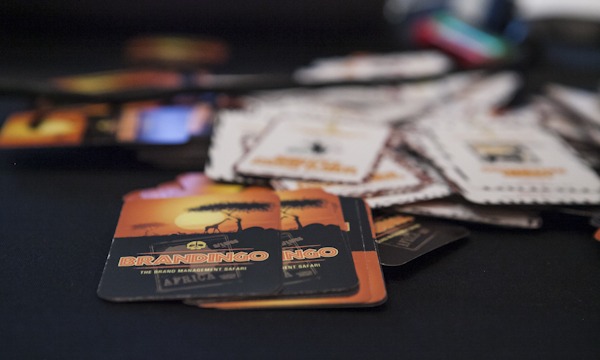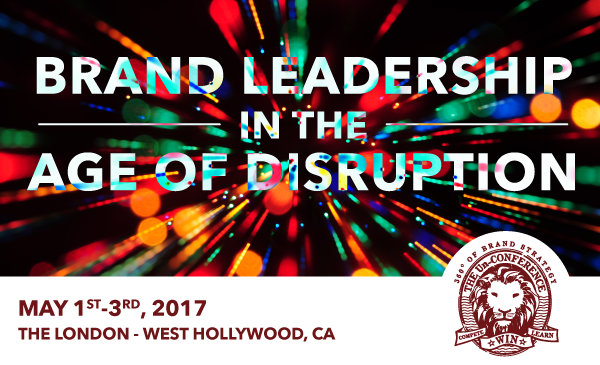
We’ve all been in those meetings. The subject of the company’s brand purpose comes up and the C-level executives around the table roll their eyes or become fidgety.
For them, the P-word is a soft thing, nice words, lofty and aspirational, and notoriously difficult to measure. Purpose may remind them of a plaque in the boardroom which makes employees cynical about hollow leadership initiatives and mantras. Or it may sound like a branding, public relations or Corporate Social Responsibility (CSR) tactic, not worthy of a board-level discussion.
But they would be wise not to dismiss the P-word. In fact, today many leading CEOs and companies are finding that embracing a core purpose is not only a ‘good’ thing to do but also drives top corporate performance. Bottom line? Purpose means growth, and growth means profit.
What Is Brand Purpose?
Purpose is the reason the company exists not only materially and economically but also emotionally and spiritually. It is the enterprise’s unifying statement of commitment to customers, employees and the larger world it operates in.
A higher purpose connects the business and peoples’ work to societal goals such as reducing hunger in the developing world or improving public health in the US.
Purpose, more than money, motivates the best employees to come to work every day and make a difference. A strong, values-based direction helps a company attract and retain the highest performers.
If a company’s brand positioning statement appeals to customers’ functional and emotional needs, then its purpose statement expresses the company’s soul, defining how it serves Customers, the Organization and the Rest of the World (its COR stakeholders).
Procter & Gamble’s Purpose: We will provide branded products and services of superior quality and value that improve the lives of the world’s consumers, now and for generations to come. As a result, consumers will reward us with leadership sales, profit and value creation, allowing our people, our shareholders and the communities in which we live and work to prosper.
Most companies have visions, missions and values; but having a purpose goes deeper: it establishes a reason for being (beyond economic) and defines individual employee and collective meaning and direction.
The Case For Brand Purpose
Harvard Business School professors John Kotter and Rosabeth Moss Kanter helped put the purpose concept on the corporate strategy map (along with Jim Collins prior). They published works asserting a causal relationship between a company being a good global citizen and making good profits.
Kotter referenced a multi-year study with 200 companies to argue that ideals-based businesses outperform the others in revenues by 400 percent. Babson professor and Whole Foods advisor, Raj Sisojdia, studied 28 companies from 1996-2011 and concluded: purpose-driven enterprises (“firms of endearment”) grew by 1647 percent compared to the S&P 500 average of 157 percent.
Competitive strategy legend, Michael Porter, a colleague of Kotter and Kanter, broadened the argument and began a revolution with his “Shared Value” paper. In it, he called for a remaking of the corporation, and of capitalism itself, to serve rather than compete against societal aims such as decreasing obesity or carbon emissions. According to Porter’s thesis, the company’s own economic interests would ultimately be better served by structuring and operating the business to achieve these greater goals.
Still, scholars and case studies divide over the relationship between corporate purpose and profits. One camp led by Porter argues that profits should not be the primary corporate goal but rather the byproduct of an effective implementation of a purpose-based system. Another school holds that profit-focus and achievement is a precursor and the most effective way to fulfill a great purpose. Some strategists say purpose and profits should be twin objectives and reinforce each other.
Can a company become great, in every sense of the word, by operating with social purpose at the core of its business model? Or does a company become great only
After it has built the capabilities to make a better world? Give forward or give back? For Porter, the ‘give back’ corporate philanthropy and more recent CSR movements have failed in tackling social problems and often end up hurting the economic and social interests of the company.
Notwithstanding chicken-and-egg arguments, the large body of data supports the case that purpose-driven companies are high performing ones.
Companies should embrace a higher purpose by serving and creating distinct value for its COR ‘shareholders’—Customers, Organization, and Rest of the World. Only when they do this authentically, operationally and comprehensively, will their long-term financial objectives be realized.
A company’s higher purpose should speak to the needs of the three COR audiences: Customers, Organization and Rest of the world.
Serving, Creating Value For CUSTOMERS And Improving The Category
Many companies’ marketing efforts have taken on an almost religious tone in their emphasis on serving customers’ needs (e.g. ‘voice of the customer’ research, ‘customer intimacy’ strategies); these strategies though often don’t consider the other two COR stakeholders. Customer-centricity should acknowledge that customers today want to identify and align with the company’s purpose and values, as an expression and extension of their own. A McKinsey study with business-to-business customers found they value the following attributes most in a company:
- Cares about open, honest dialogue with its customers and society
- Acts responsibility across its supply chain
- Fits in well with my values and beliefs
Millennial customers — who now drive the majority of marketplace transactions — care more about whom they buy from and do business with than other generations do. They value brand authenticity and want purpose to be intrinsic to the company and operation, not merely part of a ‘giving back’ campaign. For them, actions speak louder than words; Purpose needs to be more than just the copy in an ‘About Us’ section on the corporate web site.
Serving, Creating Value For The ORGANIZATION And Employees
Taking care of employees is good business. Porter cites the example of Johnson & Johnson saving $250 million by investing in employee wellness programs. Some companies take it a step further: they operate as employee-centric with a purpose that taps into workers’ spiritual needs. Southwest Airlines (“Spirit” is a corporate Value) has carried the employees-first mantle for decades. It boldly asserts that colleagues come before customers. Founder Herb Kelleher once said, “If the employee comes first, then they’re happy…A motivated employee treats the customer well. The customer is happy so they keep coming back, which pleases the shareholders.”
The airline company just reported its 43rd consecutive year of profitability. Companies like Southwest that actively engage their employees through a shared purpose are the ones that perform the best.
Millennial workers, to a greater degree than other cohorts, seek to participate in a purpose-driven enterprise. Purpose is also a powerful recruiting and retention tool and provides a company with a strong competitive advantage.
Serving, Creating Value For REST OF THE WORLD And Communities
Porter’s model challenges all companies, business-to-consumer and business-to-business, to carefully consider and act on their role in the wider world. Shared value means the company should integrate external social needs into its core offering. It also means employees are incented to make a difference in their communities and beyond — through their ‘personal brand’ initiatives or corporate means (e.g. Citizen IBM or its Peace Corps-like Corporate Service Corps). “Smarter Planet” is more than a campaign. It continues to be operationalized in many ways.
GE’s ecomagination business ($12 billion invested, $160 billion in revenues s by 2013) is an example of social offerings borne from core purpose. No longer can companies afford to be on the sidelines leaving government and non-profits to tackle the world’s social ills. Companies should exist to solve these problems, argues Porter.
Best Practices
Purpose-driven, high performing enterprises have been adept at building their system in four phases:
1. Customers. The company’s leadership should work in an inclusive way across the organization to craft a purpose statement that is credible, authentic and compelling for COR stakeholders. The statement can be a simple few words, like Disney’s “to make people happy” or a paragraph like Procter & Gamble’s. Successful statements are rarely earth-shattering — but they need to be clear, genuine and motivating.
2. Communication. Once the purpose is established, leaders should communicate it first to the organization, then to customers and the wider world. Great purpose-based companies (e.g. Whole Foods, Zappos, Tata Group) tend to have charismatic CEOs or founders who evangelize the purpose.
3. Operationalization. The hardest part is organizing, acculturating and operating the business around the purpose while staying focused on market and financial imperatives. All employees need to understand and execute against the purpose, individually and collectively.
4. Measurement. Another challenge is establishing metrics that focus accountability and push progress. Some purpose-driven companies have used the Net Promoter Score or Brand Equity Measurement to measure customer and employee value and impact. Procter & Gamble West Africa asks its employees in their performance reviews to account for how they have bettered the world and saved lives.
Building on his corporate shared value work, Porter has expanded his view and metrics to national social advancement and well-being with his Social Progress Index.
How Are You Determining Progress At The Corporate Level?
The next time you are in a meeting with the leadership of a company lacking core direction, you should make a business case for the P-word. It would be highly profitable for them to listen and act.
Build A More Valuable Future For Your Brand. Join us in Hollywood, California for Brand Leadership in the Age of Disruption, our 5th annual competitive-learning event designed around brand strategy.
The Blake Project can help you identify and develop your brand purpose.
Branding Strategy Insider is a service of The Blake Project: A strategic brand consultancy specializing in Brand Research, Brand Strategy, Brand Licensing and Brand Education
FREE Publications And Resources For Marketers



























